How to prune blueberries?
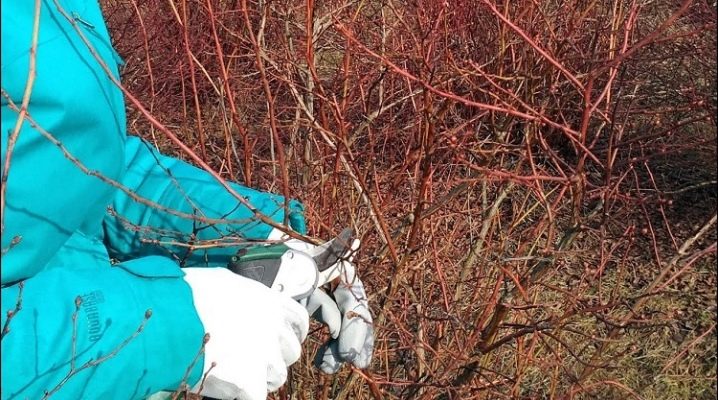
Blueberry is a compact but actively branching shrub. Delicious berries appear only on strong branches of the past year. That's why knowing how to prune blueberries will be required in any case, whatever the variety.
The need for a procedure
Blueberry bushes become too dense without pruning. The crop becomes shallow and loses its taste. The plant becomes susceptible to diseases due to the mass of dried out, obsolete shoots. Pruning also prolongs the active life of the shrub. If you approach the issue correctly, you can get high yields from a bush up to 30 years.
Pruning is equally important for compact and modern tall varieties, which can reach 2.2 m in height.
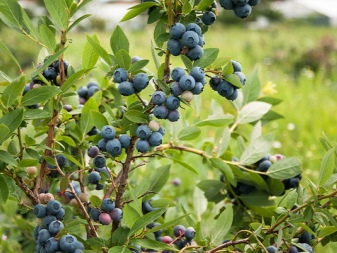
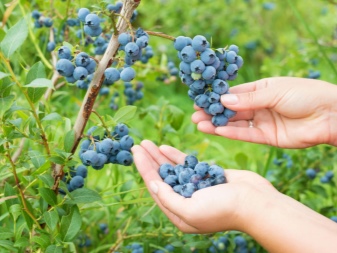
The plant is actively producing zero shoots. These branches grow next to the bush, directly from the soil. They are capable of severely depleting the bush. They are removed regularly. Pruning can be done in spring and autumn from the first year of life. In spring - in April-March, but before the start of sap flow. In autumn, garden blueberries are pruned in mid-October - late November, after the cessation of sap flow, but 1 month before frost. In warm regions, pruning is also carried out in winter.
The most important thing to know about blueberry development before pruning.
- The bush consists of shoots of different ages. Young branches without branches, with bright and smooth bark, 2-3-year-olds have branches and lignified bark.
- Berries grow only on new shoots of branches that are older than 2 years. Fruit buds are found only at the ends of the shoots, not along the length.
- Replacement shoots grow every year, that is, the plant renews itself. The gardener's task is to regulate this process.
- Branch yield decreases with age. At 4-5 years old, the branch is considered old. It will have shortened shoots and smaller fruits. On young branches, fruiting shoots are powerful, long, with huge berries.
Berries are tied only at a height of 30-40 cm above the ground, below them almost never. It is very rarely necessary to trim the bush to zero. This applies only to neglected plants, on which, over the years without treatment, a lot of useless stems have formed, and there is no longer any point in thinning them.
And also full pruning will help save a drought-stricken bush. All shoots are removed, watering is resumed - in 2-3 years a full-fledged bush will grow in this place.
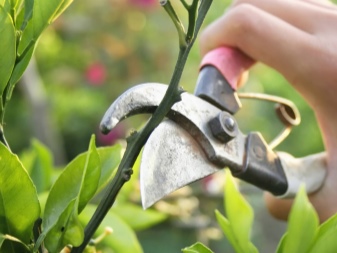

Tools and materials
You need a good pruner to trim dove bushes. The blades should be as sharp as possible to minimize damage. The best secateurs damage the plants only in the places of the cut, the bad ones crush, chew the bark, such wounds heal worse and can even be the cause of the death of the bush.
Blueberry bushes are quite compact, so the long-handled lopper is rarely needed. For the removal of small growth, shoots and buds, garden shears with blunt ends are convenient. A hacksaw or saw is only required when pruning very old bushes. To seal the sections on branches thicker than 1.5 cm in diameter, it is advisable to prepare a special putty.
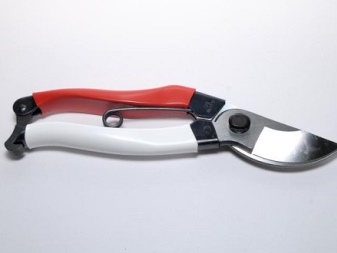
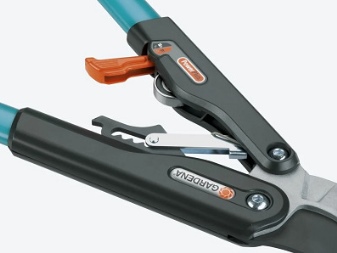
Species overview
Immediately after or during planting, pruning is needed to balance the above-ground and underground parts. Then only the flower buds are removed. It is too early for good harvests, the plant will only waste its energy. The most important pruning is formative. It is believed that in the first year it is necessary to form a plant, leaving 2 vertical shoots and several lateral ones.In industrial conditions, the bushes are cut quite strongly according to the following scheme: no more than 10 fruiting shoots and 3-4 one-year replacement shoots are left. But the formation can be carried out in the third year. It all depends on the specific variety and the capabilities of the gardener. Formative pruning can be daunting for beginners, but with experience comes flair and ease in achieving balance - you can immediately see what to remove from the bush to lighten it, and at the same time not deplete with excessive deprivation of green mass. In addition, industrial shaping gives not too decorative, "bald" bushes, which may be undesirable in ordinary household plots.
The second pruning of an active young bush will be required already in the same year in the fall, if it was planted in the spring. Remove zero shoots, excess branches on the main shoots at a height of 40 cm from ground level. The stems of the bush at a height of up to 40 cm should be completely smooth, there will still be no berries here, and small growth impairs ventilation and can become a breeding ground for diseases. The plant bears fruit in the second year after planting. Shoots that have already given berries will no longer be productive, they are removed in the fall. To grow large berries, old shoots are pinched after changing five fruit buds, the procedure is performed every year in spring.
Important. Pruning can be done on a ring or on a stump. Lateral branches should be properly removed only on the stump. Otherwise, the entire branch on which they are located will die.
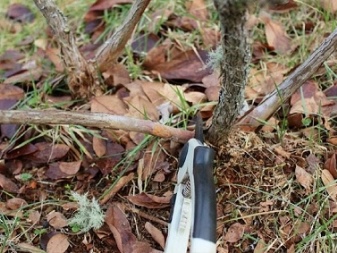
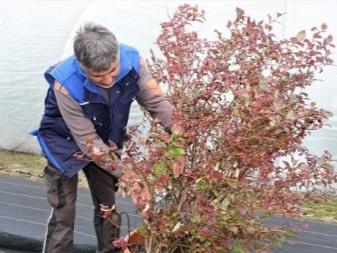
Rejuvenating
Autumn rejuvenating pruning is carried out on bushes over 2 years old, usually from the 3rd year of life. Lying shoots are removed to the level of vertical growth, damaged tops, lignified branches with cracked bark, as well as shoots that are too short - up to 30 cm from ground level. In very old bushes that have reached 7 years old, branches of 4 years old and older, as well as branches of the lower tier are removed. You need to leave no more than 9 perennial branches and 5-6 of the strongest annuals.
An average scheme of rejuvenating pruning for a 5-year-old bush with abundantly branching shortened lateral shoots.
- If the old branch has strong vertical branches, then the branch is cut to one of them, thus replacing the old branch with a fresher one.
- If the old branch does not have good vertical shoots, it is removed completely to the base.
- By pruning, the size and quantity of the berries are varied. If you need abundant, but smaller berries, leave branches up to 7 years of age, if you need large berries, remove all branches older than 5 years.
Sometimes pruning is called rejuvenating only bushes older than 10 years old, poorly growing, with reduced growth of shoots and weak flowering.
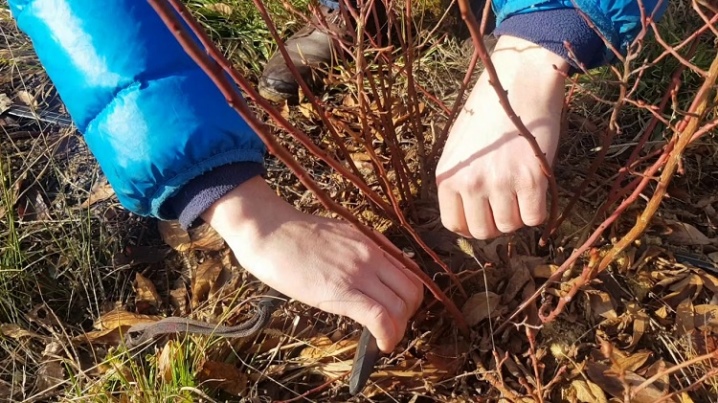
Thinning
Thinning is aimed at the formation of strong shoots capable of producing large berries. In young bushes, thin shoots of the lower tiers are removed. The intensity of pruning is increased by 3-4 years of plant life.
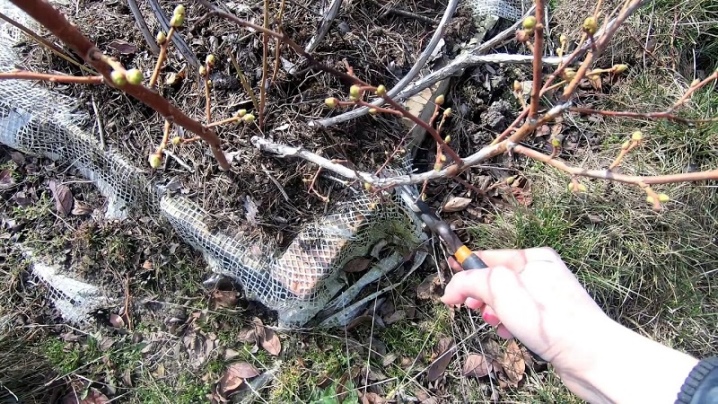
Sanitary
All branches that have fallen during the winter, rotten, damaged, with traces of diseases are removed. Sanitary pruning is usually carried out in the spring, but this type of pruning is not limited to the season. It is better to remove the diseased branch in time than to wait until the disease invades other areas.
Sick branches are cut without touching the affected tissue, capturing at least 2 cm of a healthy branch. The secateurs must be in perfect condition, after each bush it is advisable to disinfect the instrument, in especially difficult cases - after each cut. All diseased branches are burned, in no case put them in compost, and do not leave them on the ground.
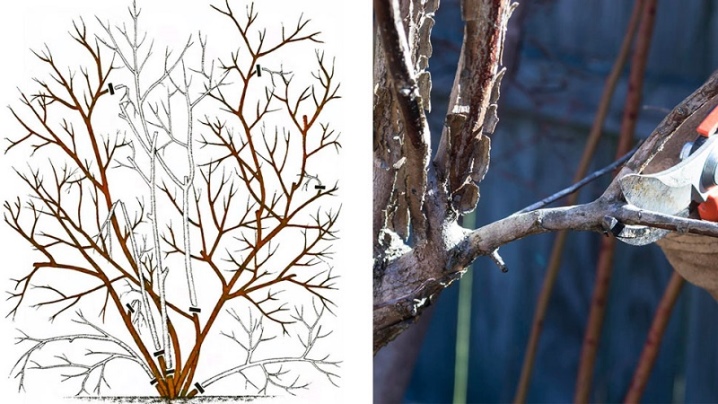
How to trim for the season?
In the spring, thinning, shaping, sanitary, rejuvenating pruning is carried out. Spring pruning is better than other types, because flower buds are clearly visible (they are plump, not narrow), you can update the plant for the current year. If there are mistakes, the plant partially compensates for this, because it is in the spring that it is in the stage of active growth.
An approximate scheme of spring pruning in the Moscow region.
- Inspection of the bush and removal of all dead or damaged shoots.
- Thinning the shrub to make it lighter and more breathable. For this, branches without new shoots or with short shoots up to 4-5 cm are removed from the center of the bush. Such branches are removed on a ring.
- Unproductive branches are those that do not have fruit buds or are too long. You can delete all of them.
In the fall, they must perform preventive pruning for the winter: for example, they remove the unripe tops, because in winter they will still freeze out, opening the way for infections. All other types of autumn pruning are performed as needed.
If there are damaged or injured branches, they are also removed. And also cut off the shoots that have already borne fruit - next year they will not be of any use.
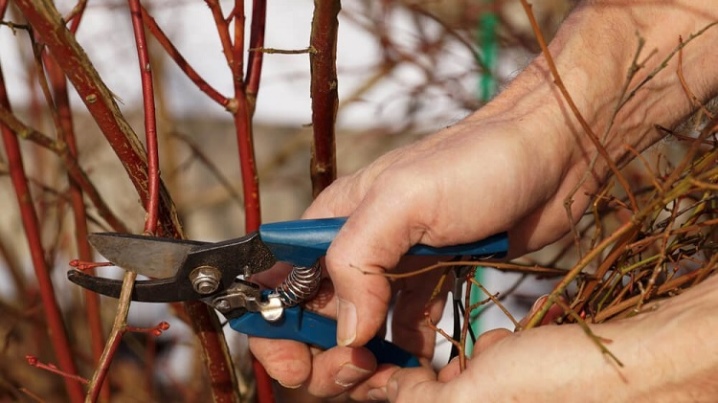
Pruning different varieties
Blueberry bushes have a different habit, this is taken into account when pruning.
- Low-growing varieties such as Northblue, reaching only 90 cm in height, is pruned "in breadth", not upward. The thickening growth is removed. The same applies to varieties of any height that are prone to spreading. For example, the Dixie cultivar reaches a height of almost 2 m, and regularly produces small shoots and shoots at the base. They are taken away, they are unproductive.
- Tall varieties ("Divnaya", "Nectarnaya", "Eliot") actively shorten, removing all old or too long, "bald" branches.
- Varieties with actively growing shoots often throw out branches that bent to the ground. The longest and lodging ones are removed.
Certain varieties, usually high-yielding varieties, require more intensive crown thinning. Remove branches that interfere with the strongest.
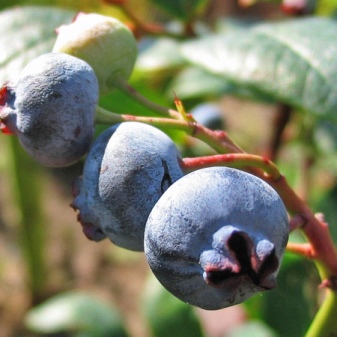
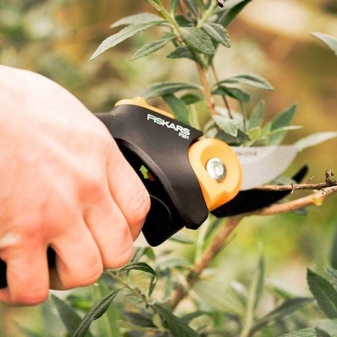
Follow-up care
After pruning, the plant can be fed and sprayed against diseases at the same time. For this purpose, the bush itself and the ground around it are treated with a solution of urea or calcium nitrate. Particular attention is paid to this procedure in the spring. In spring and throughout the year, spraying with growth stimulants and biological products that prevent diseases ("Zircon", "Epin", "Fitosporin") are also useful.
Mulching the bush is performed only with fresh material: clean straw, sawdust. If the mulch is old and dense, change it. All large wounds after trimming must be covered. Garden var causes discontent among many gardeners, because it includes paraffin refined product. Therefore, they use industrial pastes (RanNet, Blagosad), clay talkers (dilute the clay a little with water until it becomes a paste). However, in a too rainy area, there are no better options for a garden varnish. A mixture based on rosin, beeswax and fat well seals wounds and protects them from moisture and flushing. Garden var is not very suitable for the cold season, it freezes in the cold, so if the pruning had to be done when it is already cool, you can use Reshetnikov's ointment (10 parts of fir resin + 1 part of wax + 1 part of wine alcohol).
There is no point or opportunity to process small sections on blueberry bushes. To compensate for the danger of infection penetrating through small wounds, the bushes are immediately sprayed with copper sulfate, other copper-containing drugs or antifungal agents (Fundazol, Fitosporin, Topsin). Particular attention is paid to pruning when it comes to late varieties of blueberries. Lean, dense bushes can stretch fruiting for several months instead of several weeks. In such cases, you can even be left without a crop. Blueberry pruning is one of the most important care points.
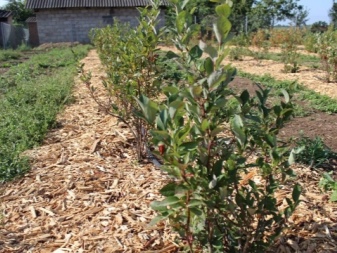
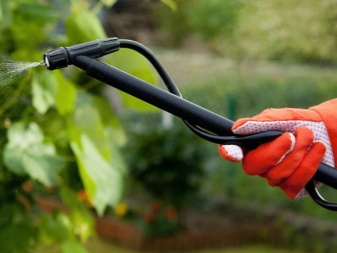













The comment was sent successfully.